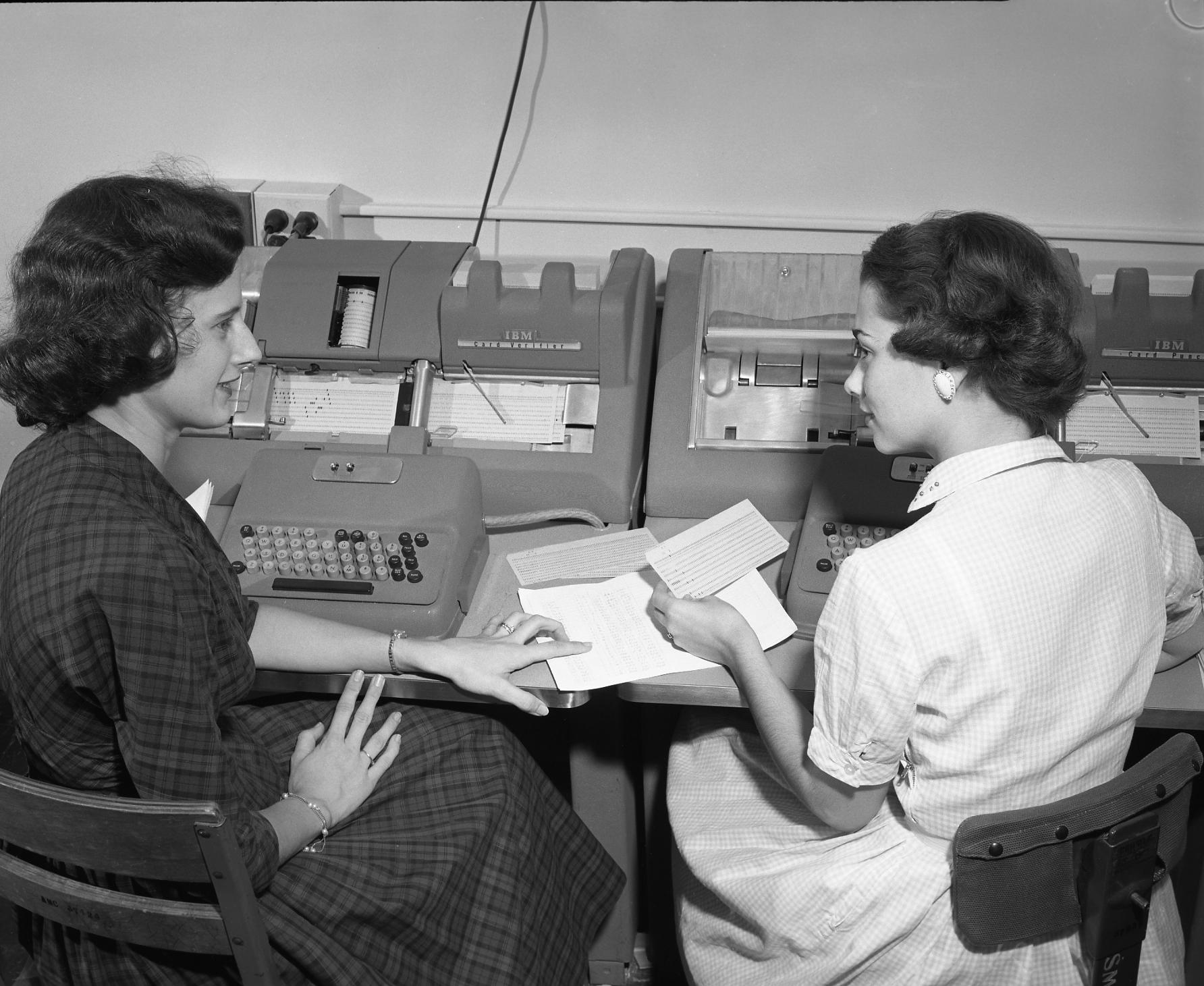Data Entry on:
[Wikipedia]
[Google]
[Amazon]
Data entry is the process of digitizing data by entering it into a computer system for organization and management purposes. It is a person-based process and is "one of the important basic" tasks needed when no machine-readable version of the information is readily available for planned computer-based analysis or processing.
Sometimes what is needed is "information about information (that) can be greater than the value of the information itself." It can also involve filling in required information which is then "data-entered" from what was written on the research document, such as the growth in available items in a category. This is a higher level of abstraction than metadata, "information about data." Common errors in data entry include transposition errors, misclassified data, duplicate data, and omitted data, which are similar to bookkeeping errors.
 Data entry using
Data entry using
Procedures
Data entry is often done with a keyboard and at times also using a mouse, although a manually-fed scanner may be involved. Historically, devices lacking any pre-processing capabilities were used.Keypunching
 Data entry using
Data entry using keypunch
A keypunch is a device for precisely punching holes into stiff paper cards at specific locations as determined by keys struck by a human operator. Other devices included here for that same function include the gang punch, the pantograph punch, ...
es was related to the concept of batch processing
Computerized batch processing is a method of running software programs called jobs in batches automatically. While users are required to submit the jobs, no other interaction by the user is required to process the batch. Batches may automatically ...
– there was no immediate feedback.
Computer keyboards
Computer keyboards and online data-entry provide the ability to give feedback to thedata entry clerk
A data entry clerk, also known as data preparation and control operator, data registration and control operator, and data preparation and registration operator, is a member of staff employed to enter or update data into a computer system. Data is o ...
doing the work.
Numeric keypads
The addition ofnumeric keypad
A numeric keypad, number pad, numpad, or ten key,
is the palm-sized, usually-17-key section of a standard computer keyboard, usually on the far right. It provides calculator-style efficiency for entering numbers. The idea of a 10-key nu ...
s to computer keyboards introduced quicker and often also less error-prone entry of numeric data.
Computer mouse
The use of acomputer mouse
A computer mouse (plural mice, sometimes mouses) is a hand-held pointing device that detects two-dimensional motion relative to a surface. This motion is typically translated into the motion of a pointer on a display, which allows a smooth ...
, typically on a personal computer, opened up another option for doing data entry.
Touch screens
Touch screens
A touchscreen or touch screen is the assembly of both an input ('touch panel') and output ('display') device. The touch panel is normally layered on the top of an electronic visual display of an information processing system. The display is ofte ...
introduced even more options, including the ability to stand and do data entry, especially given "a proper height of work surface when performing data entry."
Spreadsheets
Although most data entered into a computer are stored in a database, a significant amount is stored in a spreadsheet. The use of spreadsheets instead of databases for data entry can be traced to the 1979 introduction ofVisicalc
VisiCalc (for "visible calculator") is the first spreadsheet computer program for personal computers, originally released for Apple II by VisiCorp on 17 October 1979. It is often considered the application that turned the microcomputer from a ...
, and what some consider the wrong place for storing computational data continues.
Format control and specialized data validation are reasons that have been cited for using database-oriented data entry software.
Data managements
The search for assurance about the accuracy of the data entry process predates computer keyboards and online data entry. IBM even went beyond their 056 Card Verifier and developed their quieter IBM 059 model. Modern techniques go beyond mere range checks, especially when the new data can be evaluated using probability about an event.Assessment
In one study, a medical school tested its second year students and found their data entry skills – needed if they are to do small-scale unfunded research as part of their training – were below what the school considered acceptable, creating potential barriers."found to be lacking in more than half of the respondents."See also
* Two pass verification * Quality control *Clinical data management
Clinical data management (CDM) is a critical process in clinical research, which leads to generation of high-quality, reliable, and statistically sound data from clinical trials. Clinical data management ensures collection, integration and availabi ...
* Data verification Data verification is a process in which different types of data are checked for accuracy and inconsistencies after data migration is done. In some domains it is referred to Source Data Verification (SDV), such as in clinical trials.
Data verific ...
* Data entry clerk
A data entry clerk, also known as data preparation and control operator, data registration and control operator, and data preparation and registration operator, is a member of staff employed to enter or update data into a computer system. Data is o ...
* Input (computer science) {{Short description, Data provided to a program or process
In computer science, the general meaning of input is to provide or give something to the computer, in other words, when a computer or device is receiving a command or signal from outer sour ...
References
{{reflist Data processing Data quality